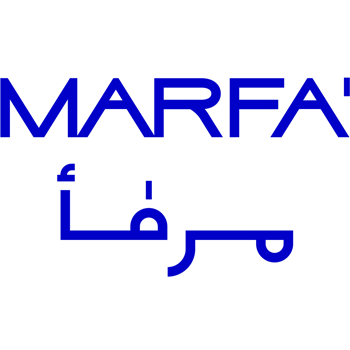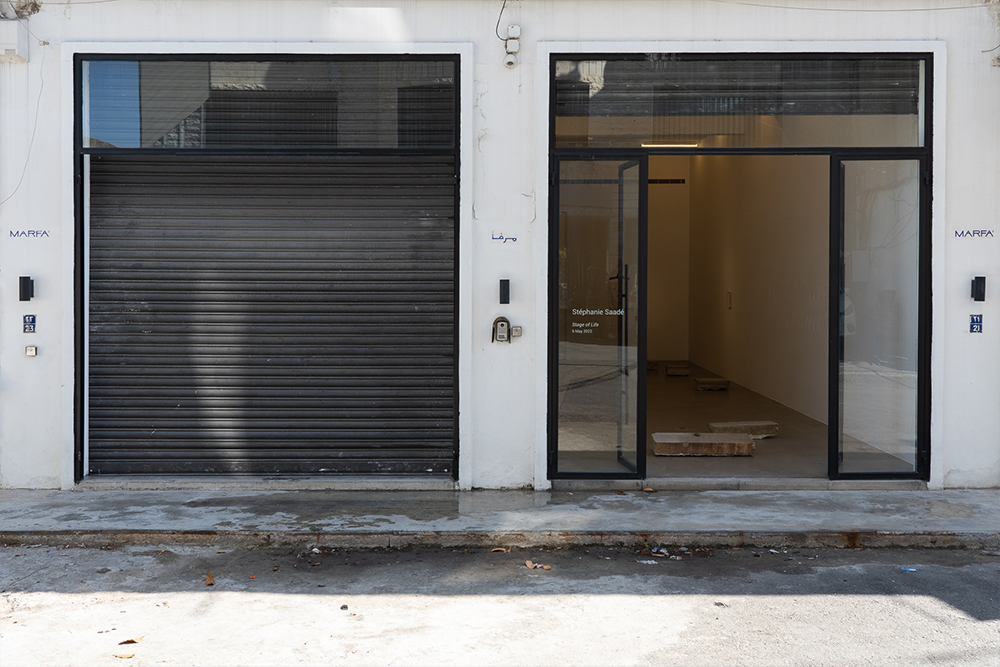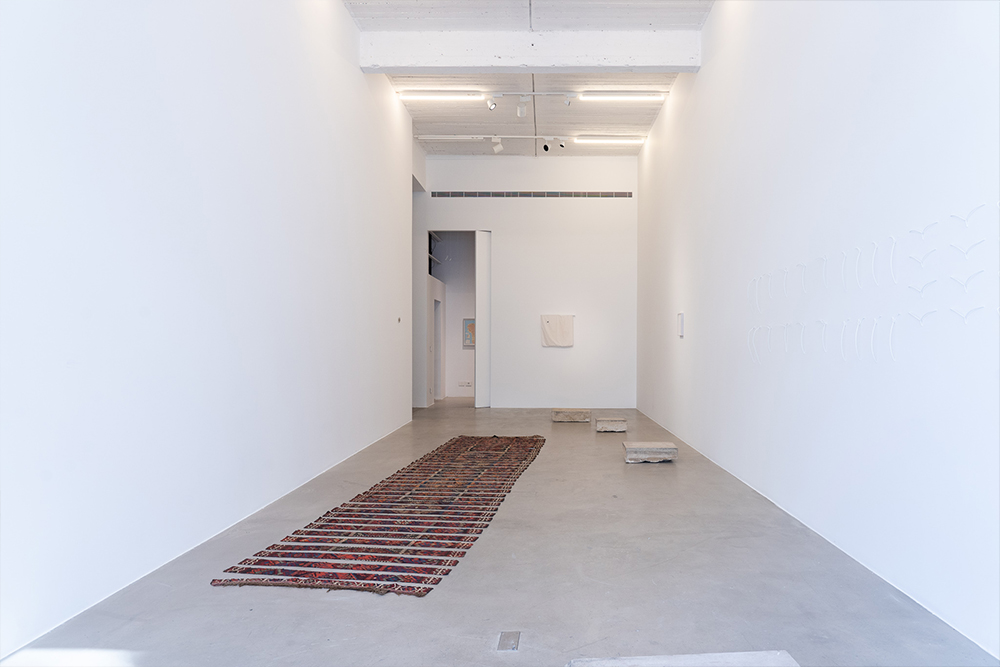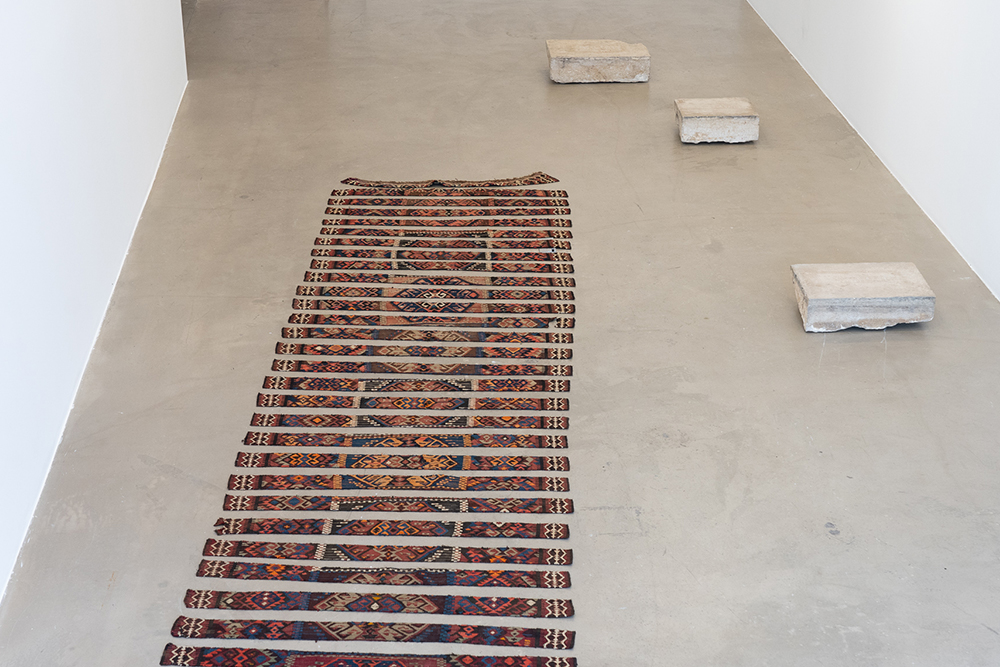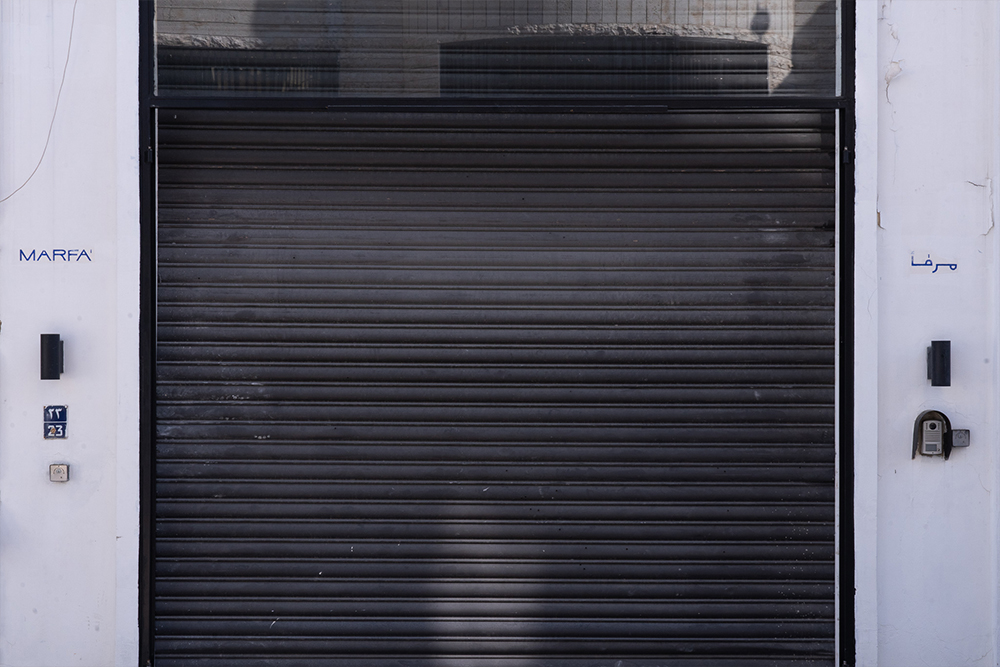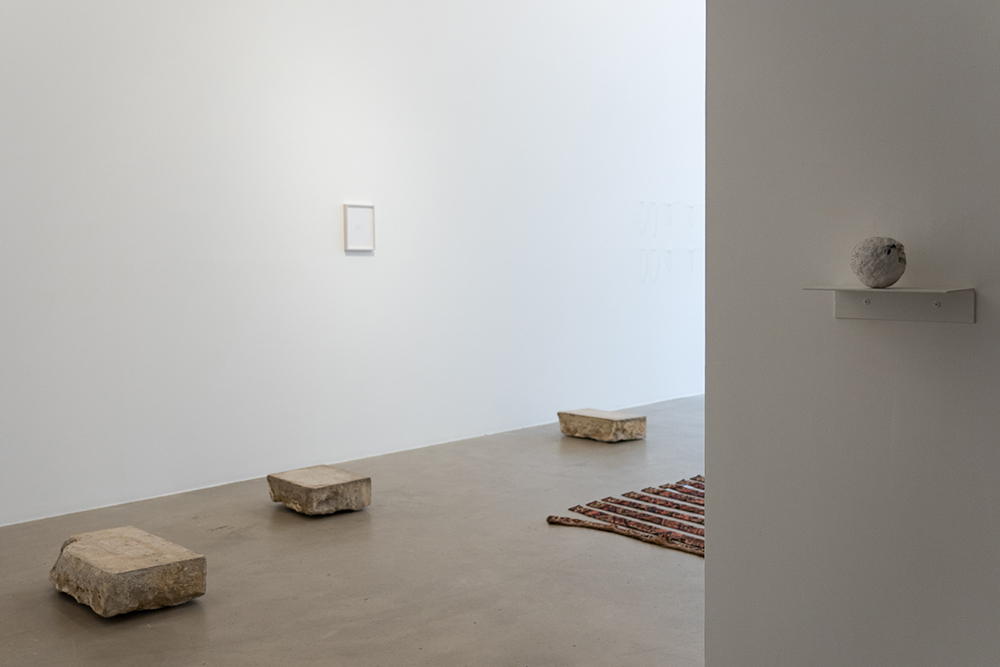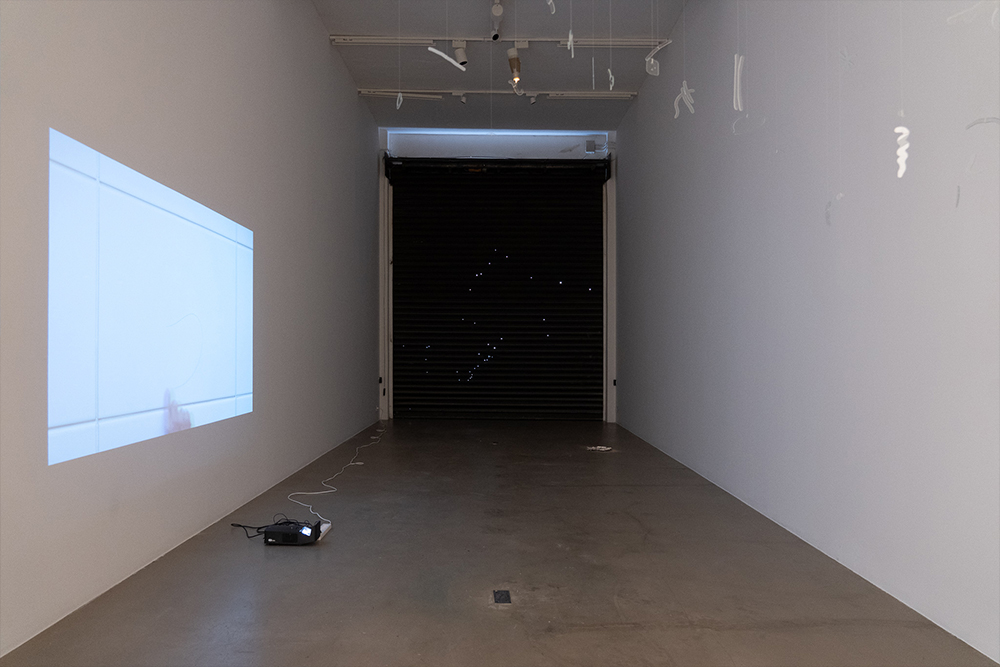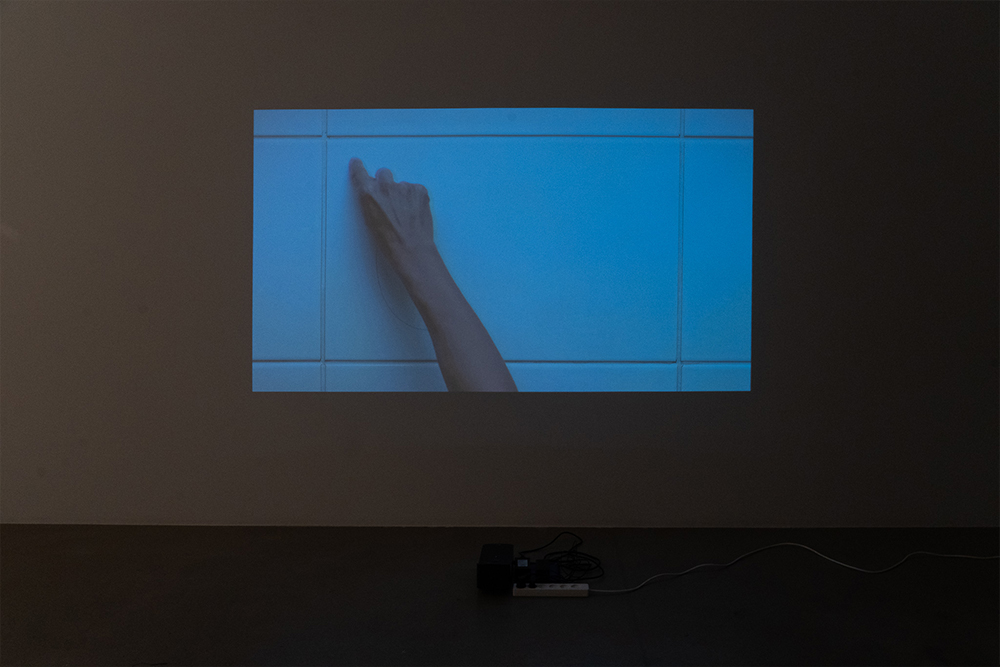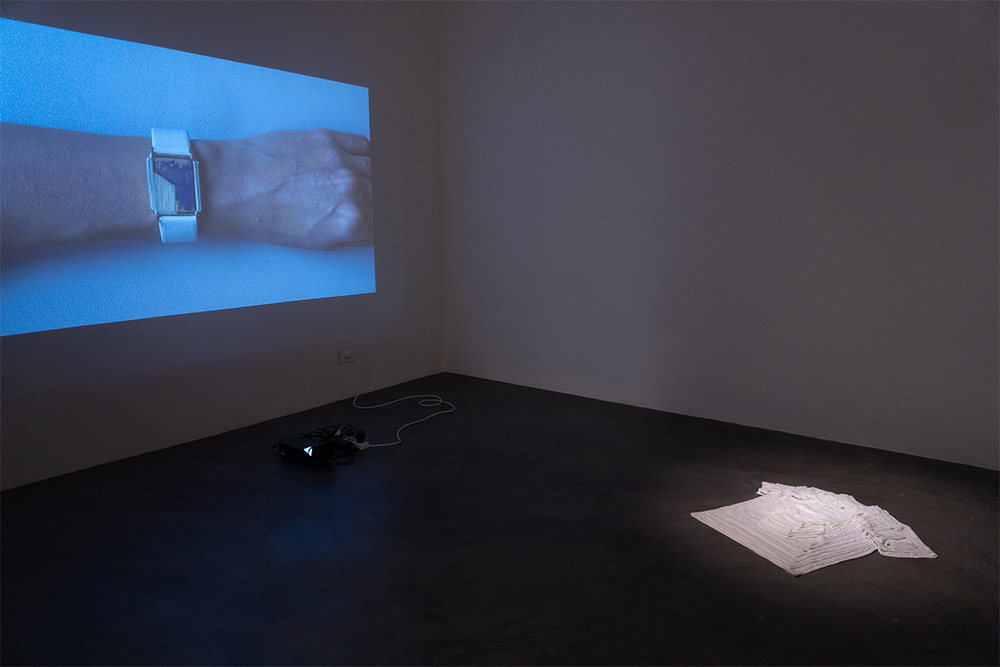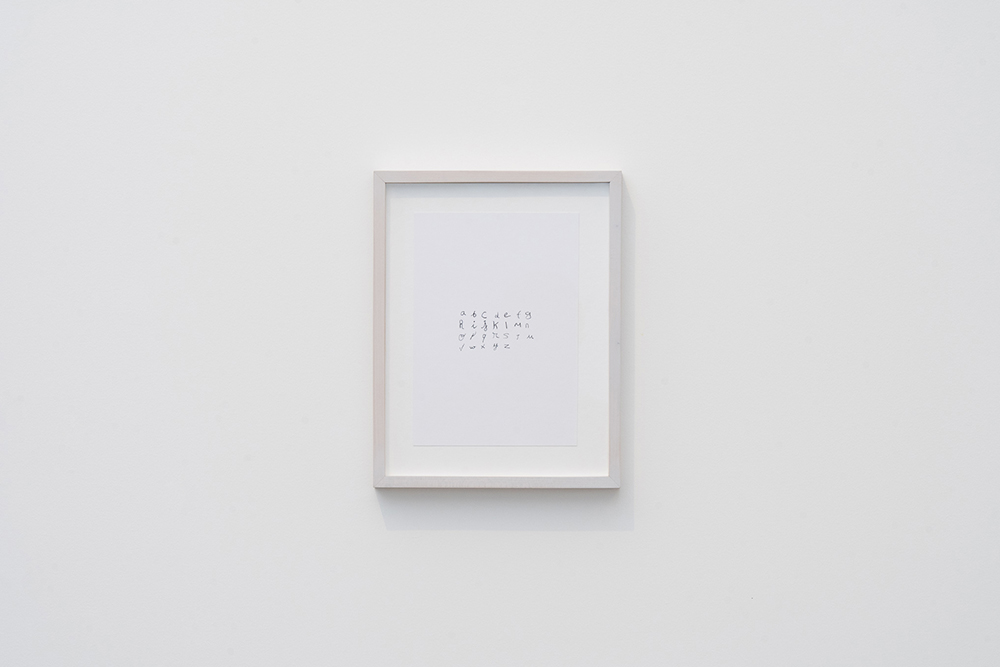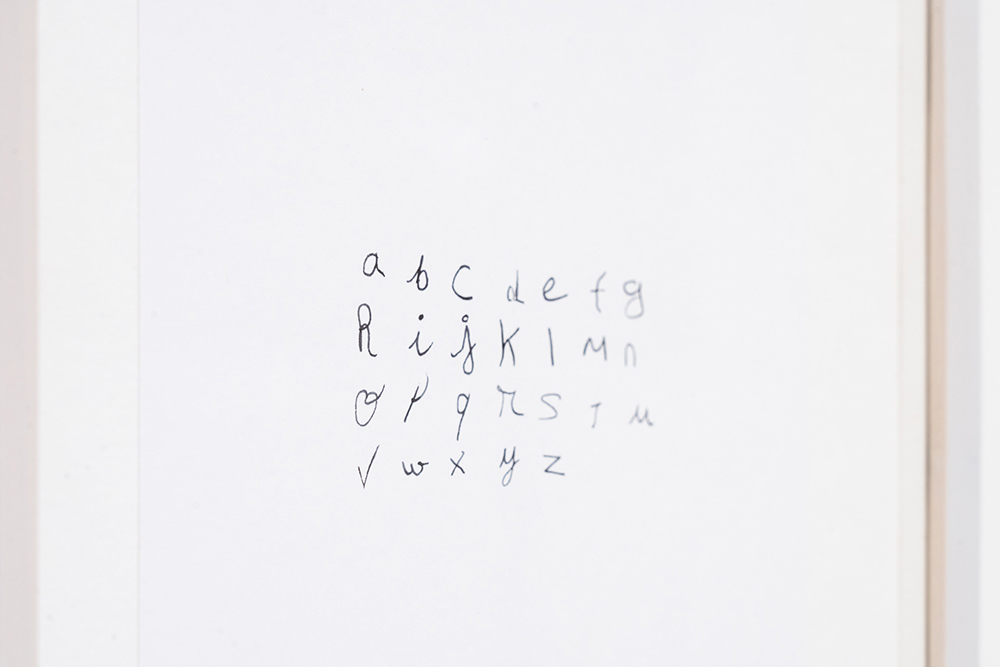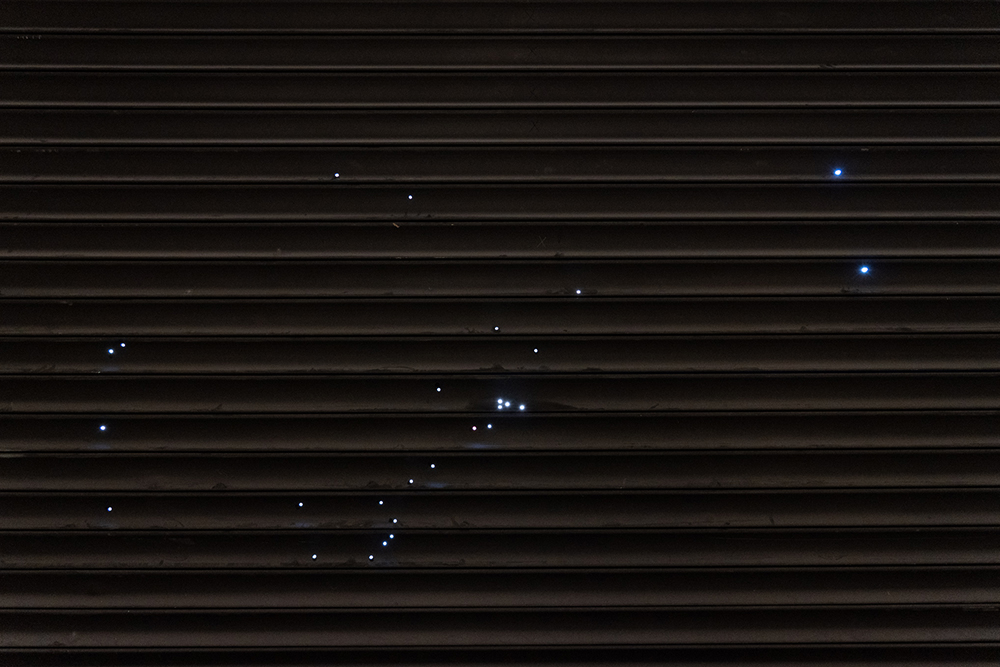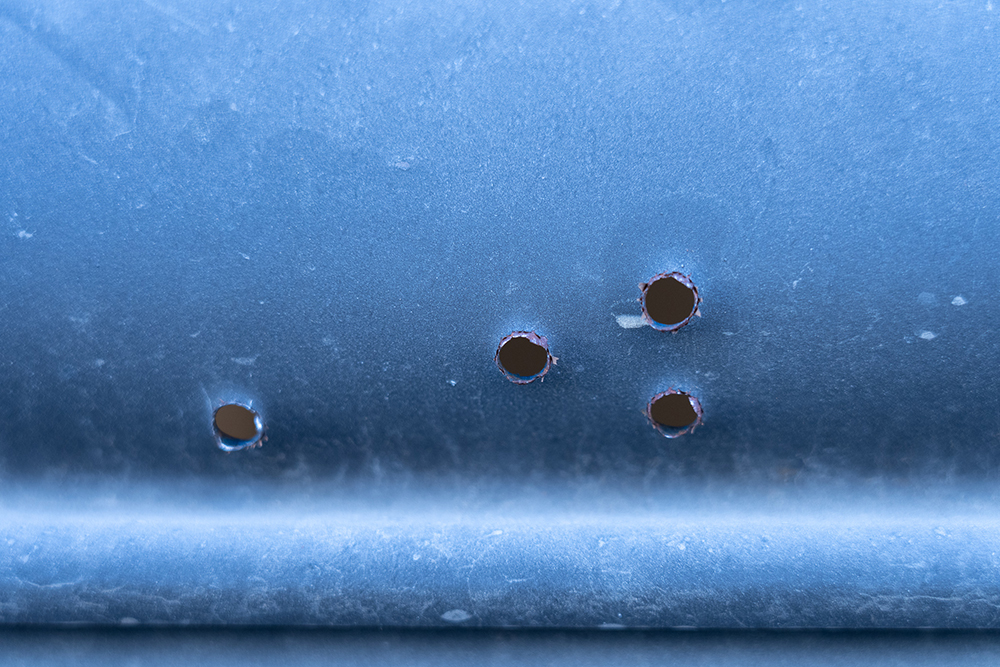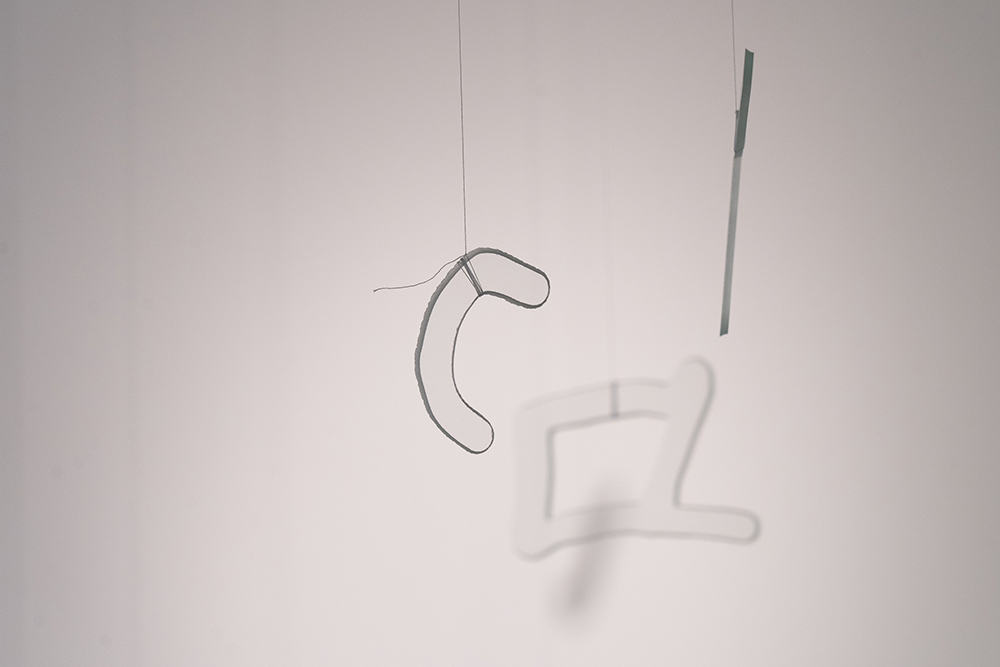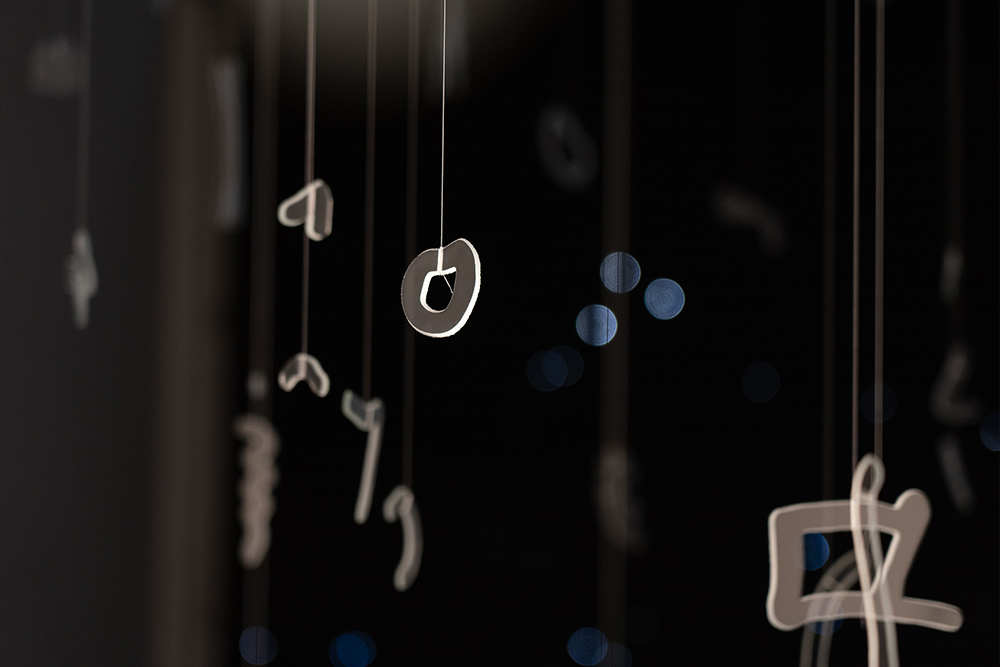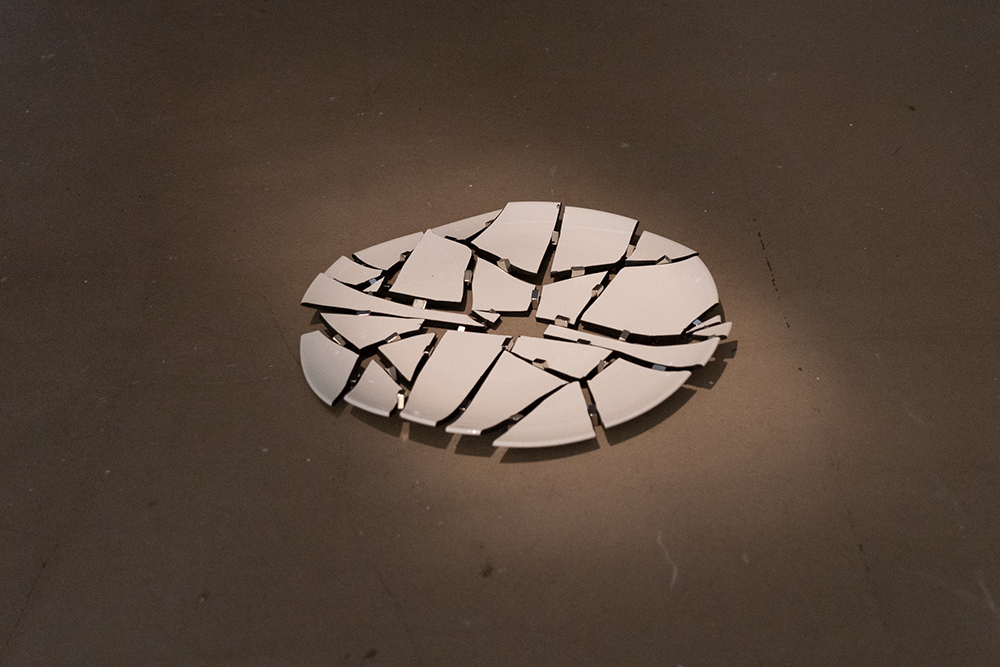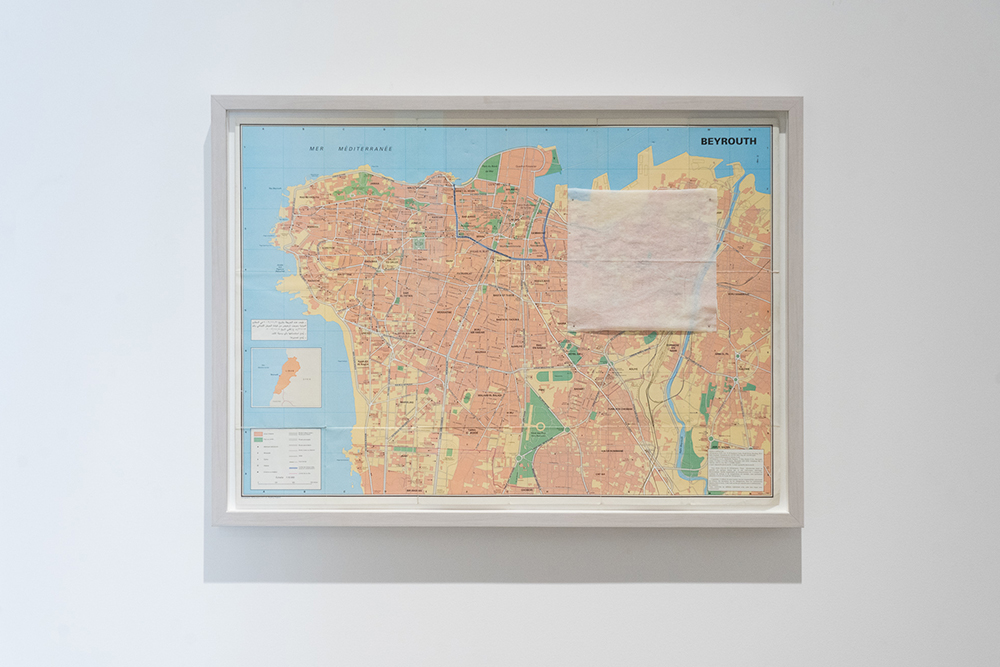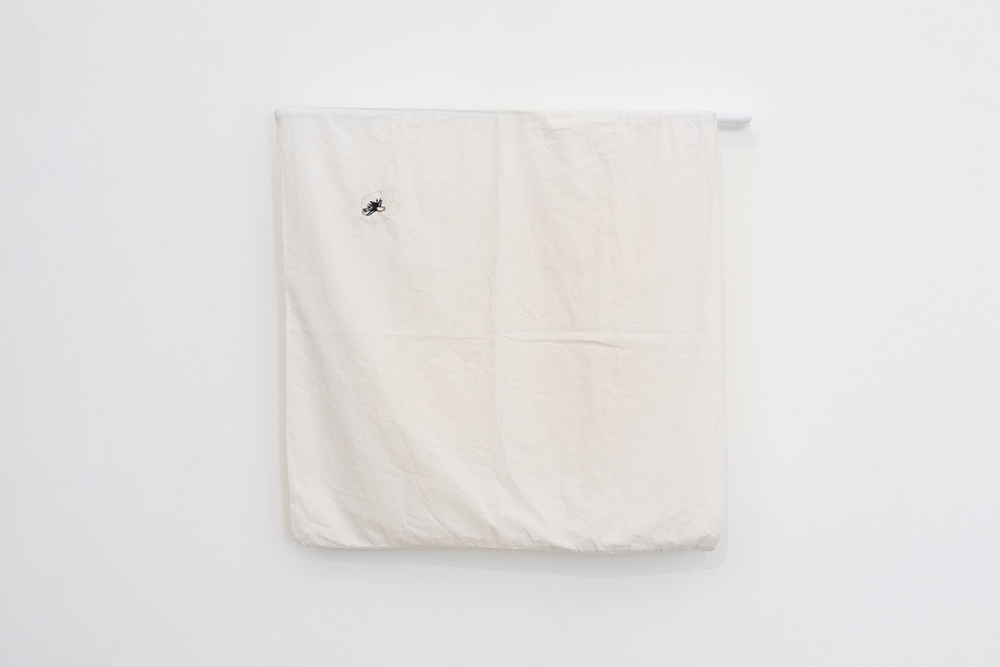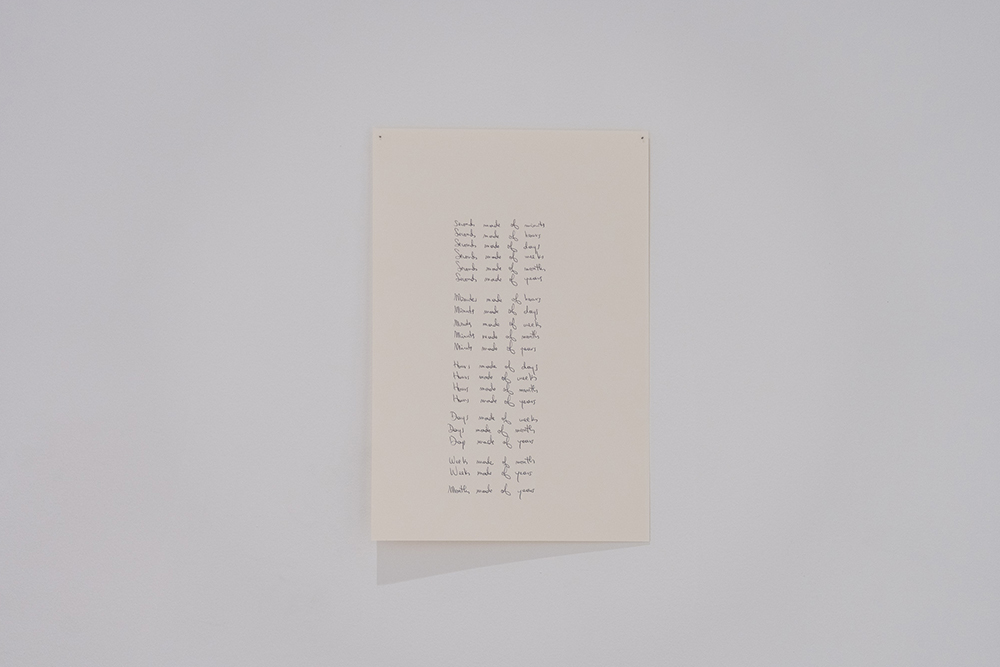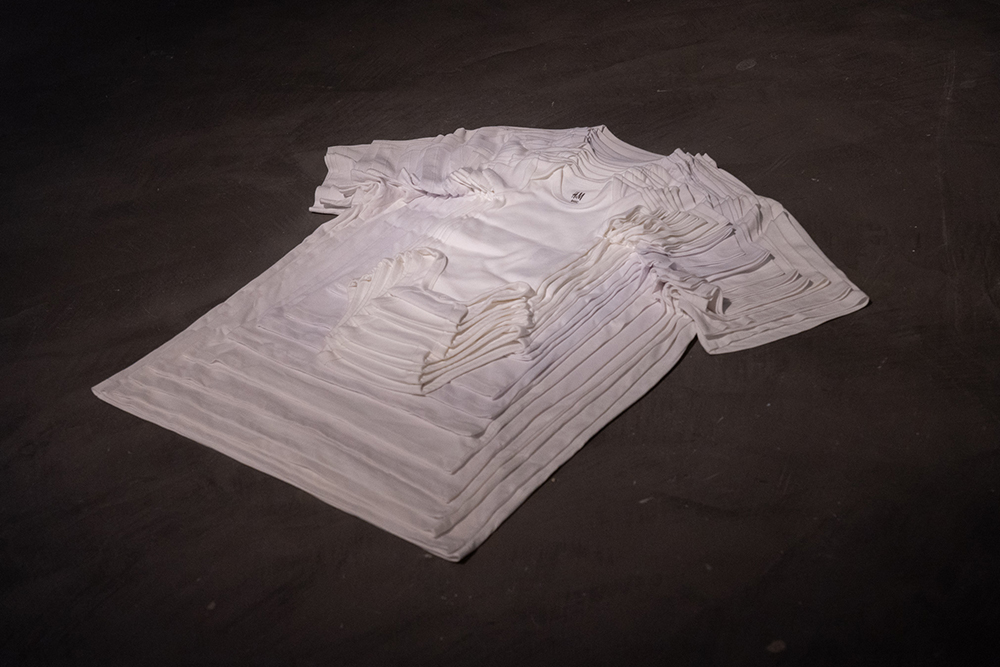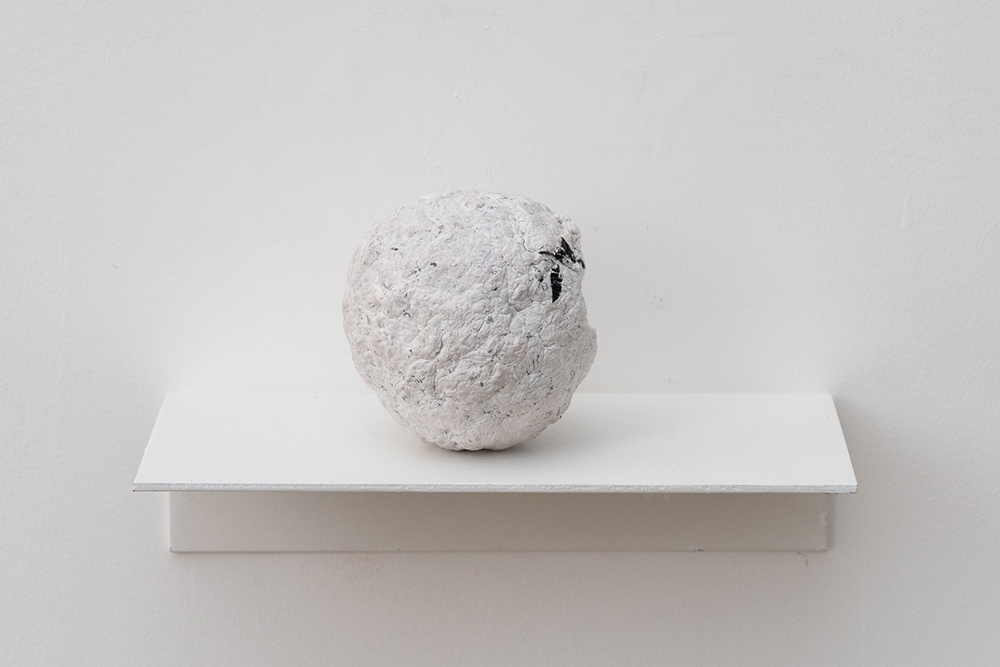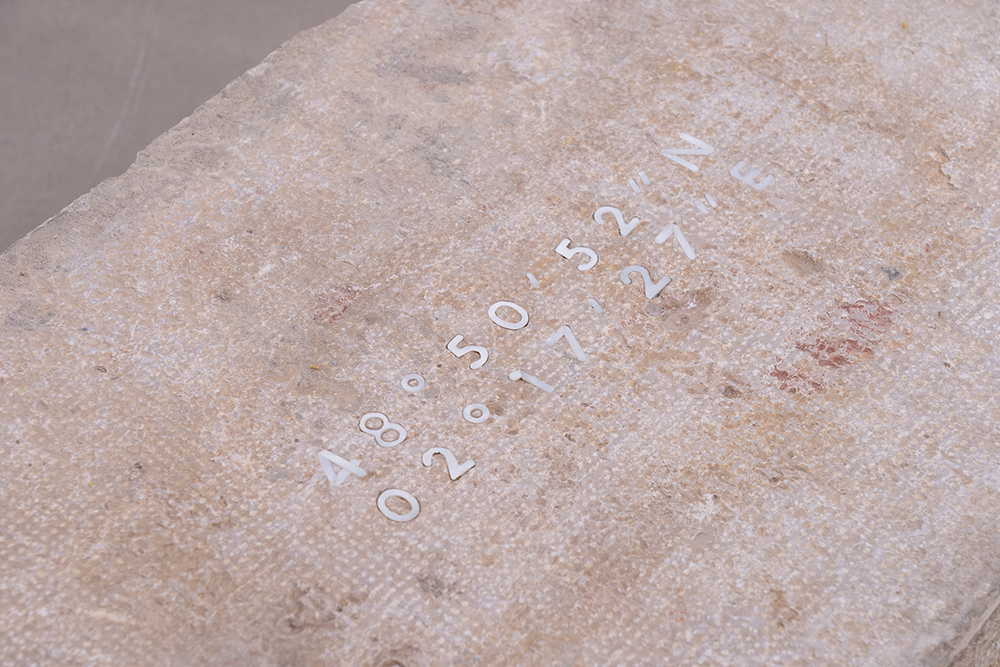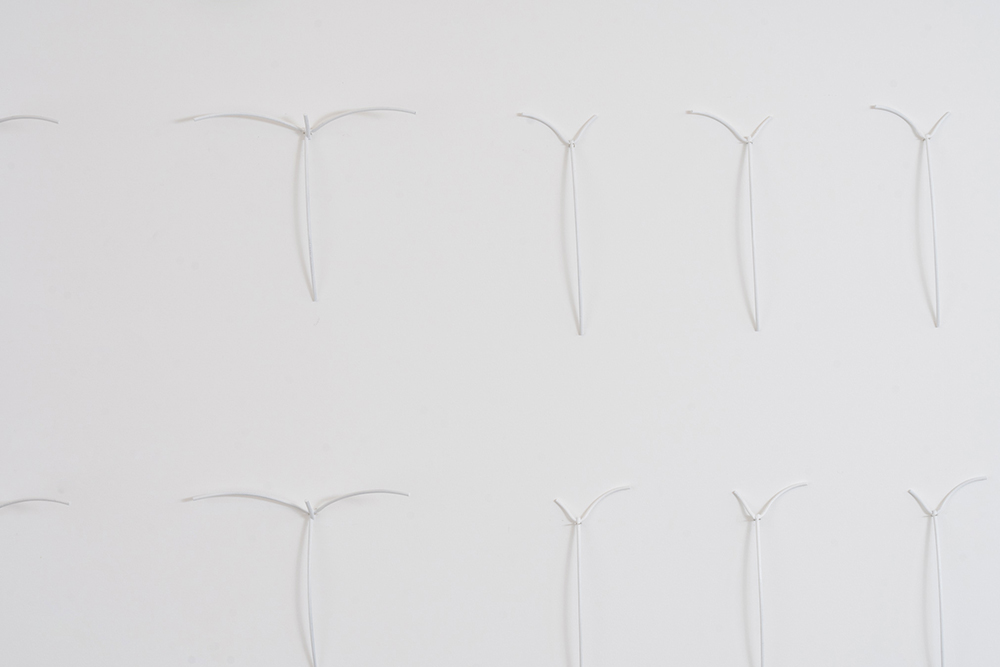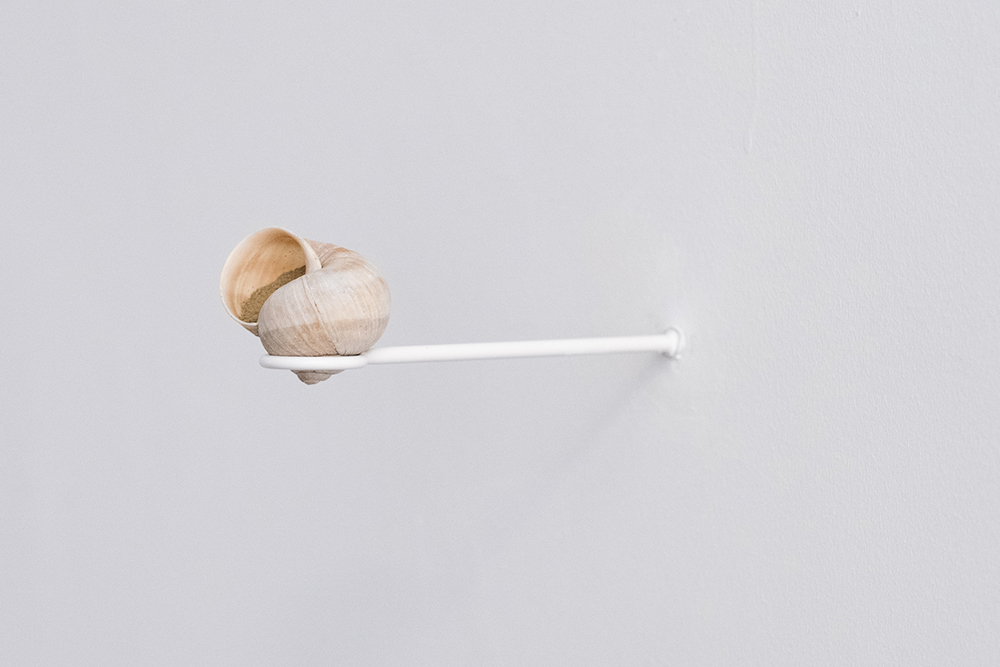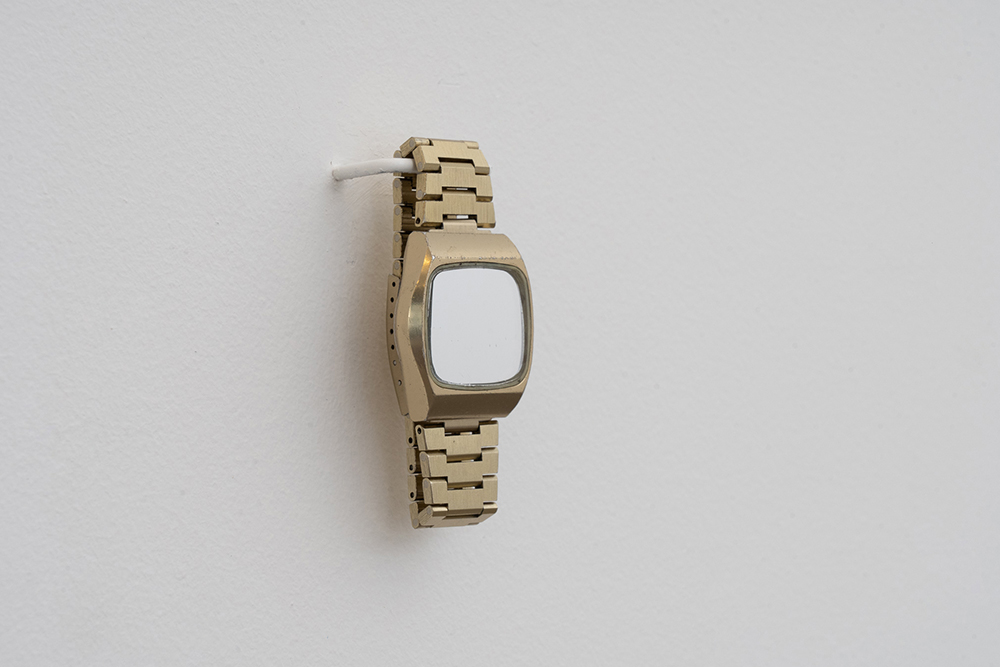Stéphanie Saadé
Stage of Life
06 May 2022
Stéphanie Saadé is Ulysses and Penelope, both at once. A side of her embarks on vagabondage while the other stays put; the urge to wander elsewhere is infused with the need to be grounded. She and her kin have been around, driven by circumstance and the desire to discover, but the point of origin remains her center of gravity, the place of equilibrium hidden deep in the viscera. In Rolling Stones, the coordinates of her immediate family members’ current geographic locations are carved into stones sourced from her birthplace. In several of her works, she ingrains these numbers—which in her case, and at close intervals, are never twice the same—into stone or wood, as in a komboloi, the Greek game of patience where a bead is passed between one’s fingers to give measure to time and rhythm to the imagination. Here and there, the places, people, paths, and distances that one inhabits pass through the fingers like a dynamic litany. These seemingly abstract numbers do not allow us to grasp the distances or comprehend the fragmentation of one’s intimate sphere on different continents. They materialize this incomprehension and remain signifiers without a ready meaning, like sentences written in Braille that one tries to decipher with their eyes. In spite of everything, a fabric is woven in time and space. Stéphanie Saadé points out the knots between which silence opens. There, between the points, in the gaps of the weave, the story is incarnated. It is Stephanie’s story, but it is also ours. In her work, the intimate is indeed treated as collective data. The white bodysuits and T-shirts that mimic the growth of a body in Pyramid are new; nothing in them tells of a specific life. However, the superimposed forms remind those of us who have carried children in their arms that the process of becoming, with its company and desire, is also in the transience of each moment, of every stage.
The great delicacy of Stéphanie Saadé’s work guides us along, to see and understand, to feel and experience, smoothly, opposed as it is to any grandiloquence. It is tempting to stop at this level, to be satisfied with the pleasures of surface and suggestion, whose nobility Stéphanie Saadé reveals and which she imbues with so much meaning. But let us not be mistaken: the finesse of the artist’s proposals, her attention to the infinitesimal, lead us to uneven terrain. Seduced by the limpid simplicity of an idea, such as that of a hair adhering to the wet tile of the bathroom in Where Eyes Rest, we let ourselves be twisted, wandering with pleasure at the tip of her finger—it is through this lightness, almost without realizing it, that we find ourselves suddenly confronted by the power of the “infrathin.” Most often, memory clings to certain events. It fixates on the extraordinary, as the everyday recedes into the backdrop. One remembers birthdays, holidays, anything that marks the continuum of the other conjoined days, all forgotten. Stéphanie Saadé is interested particularly in those anonymous days, the ways in which, little by little, they construct us. She makes the repetition of gestures and routes a central element of her work, as in Stage of Life, which materializes the distance between her bed and the front door of her building in Paris. Here again, she gives everyday life its rhythm. The footsteps resonate in the hall, drumming out an intention, a vitality. The banality of this repeated trajectory, inscribed in gestures and bodies—each of us has their own version. The journey begins there, in those first few meters that confront us daily with our departure. Yet, the traveler is not always the one who, like Ulysses, is content after making a long journey. When Stéphanie Saadé explores Beirut, it is not only a city but a universe in its own right, one in whose palm we can read the layers of time. In this microcosm, every detail is an entry point into different lives. In Free Poetry, she took note of the finger traces left by passers- by on the dirty windows of Beirut. Stéphanie Saadé sees in these repeated, mechanical gestures the specific expressions of a genius loci, comparable to the anonymous lacerations to street posters made by that plural entity that Jacques Villeglé saw at work in Paris. After photographing the traces while wandering throughout the city, she isolates them, cuts them out of glass, and then hangs them. Translucent forms, slightly mobile, neither code nor scavenger hunt, below intention and escaping any interpretation, they give form to that mysterious part of the familiar.
Alongside dusty surfaces which the passage of a finger makes transparent again, Stéphanie is interested in opaque surfaces riddled with bullets becoming «penetrable»: she speaks of the omnipresence of destroyed metal blinds still in use. After the explosion of August 4th, 2020 and the devastating impact of the blast, these old blinds, which had resisted the civil war, gave way and had to be replaced immediately in order not to leave gaping the spaces that they had long covered. For this exhibition, Stéphanie Saadé finally created A Discreet Intruder. The work stays the same while the context changes. 38 dots, one for her birthplace and 37 for the roads traveled between 1983, the year of her birth, and 1990, the year of official end of the war, are spread out on a diagram. At a glance, one sees Act 1 of the artist’s geographic displacement, the vacations, car rides, family visits: in short, life at war with war itself. The map is inscribed into the new metal curtain of the Marfa› Gallery with an M16 rifle and live bullets. Memory is superimposed, detonation after detonation. The collisions materialize these points of anchorage, like so many voids in which light comes to dwell. For, in addition to dust and rust, it is the sun which gives Beirut the blinding sharpness of its contours. The light that cuts across the gallery floor through the perforated blind traces a moving constellation made of 37 points, underlining the importance of that one other point. For the journey to be complete, one must sometimes return home.
Déborah Laks
The work A Discreet Intruder was part of Protocinema’s group exhibition A Few In Many Places in 2020
